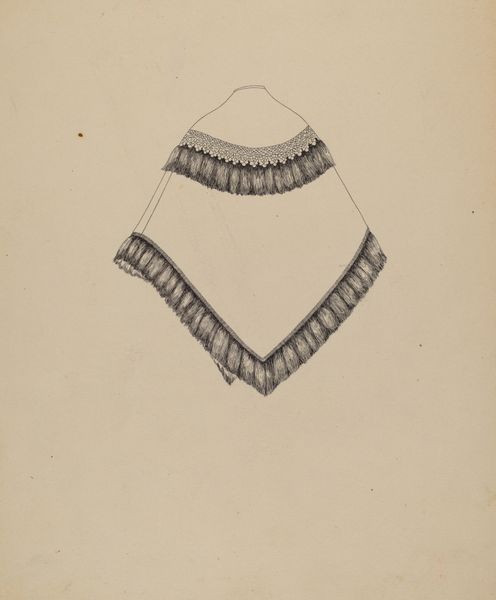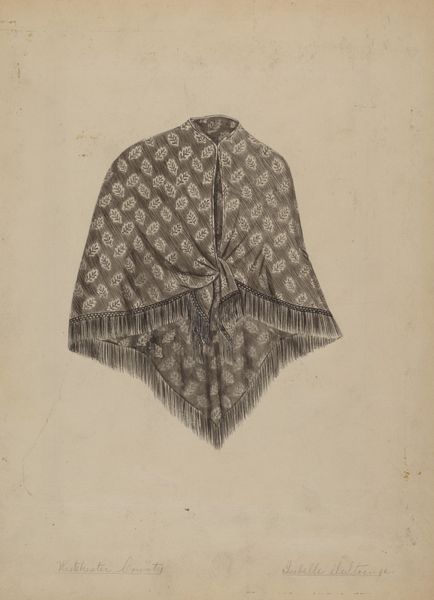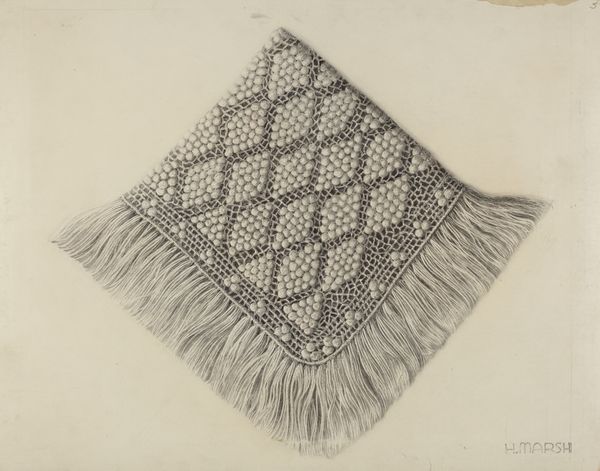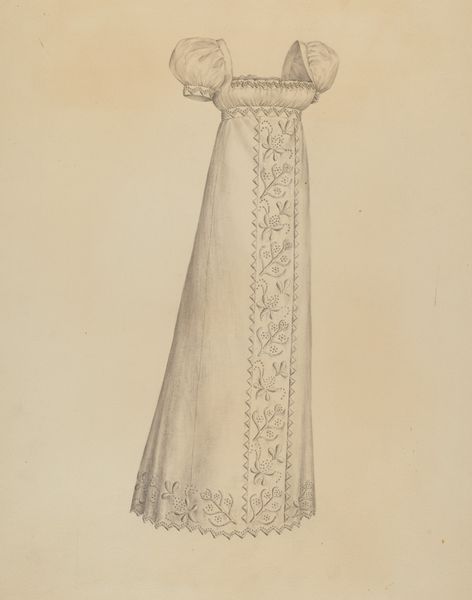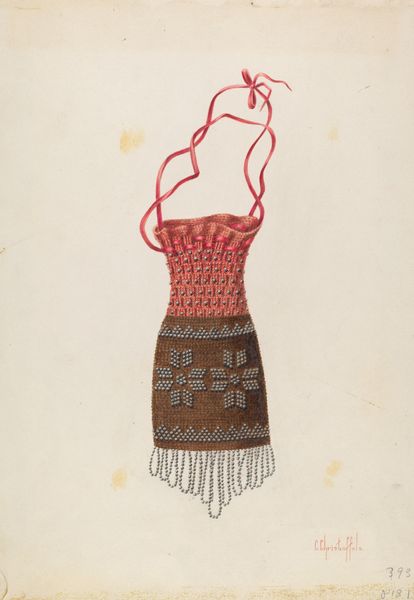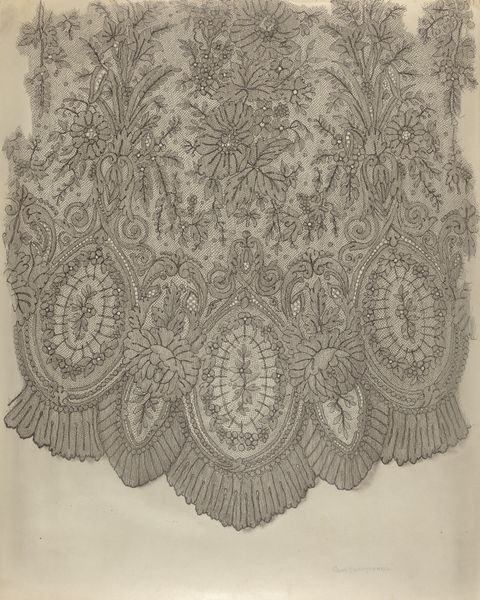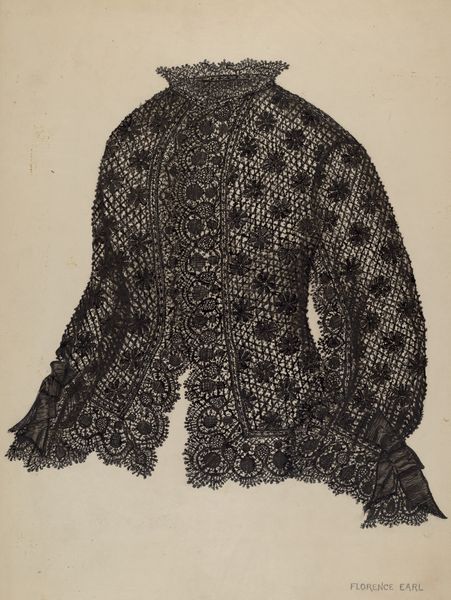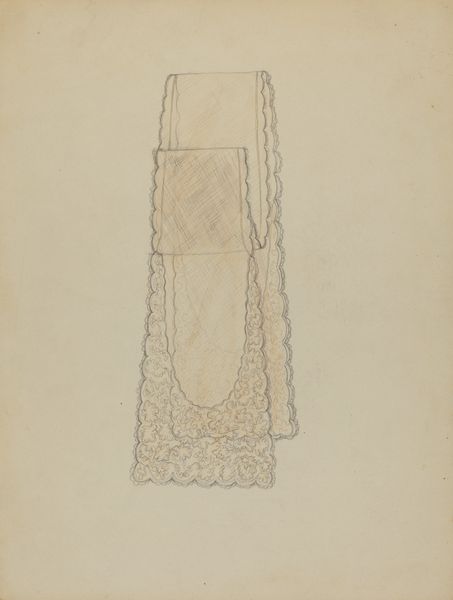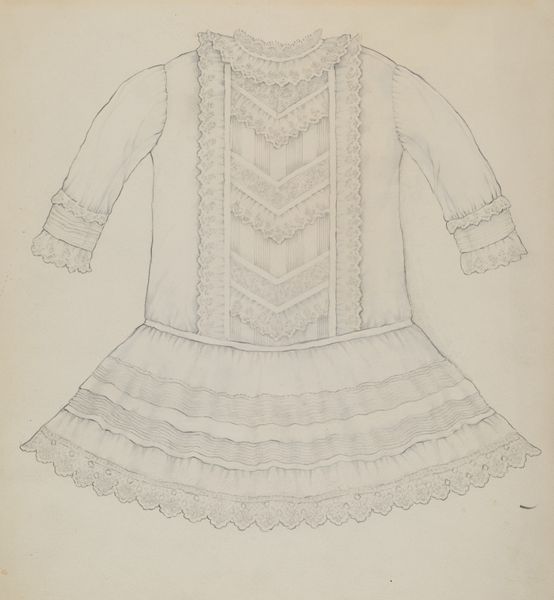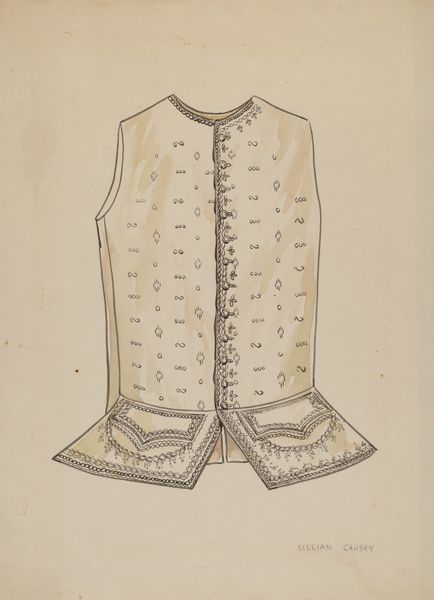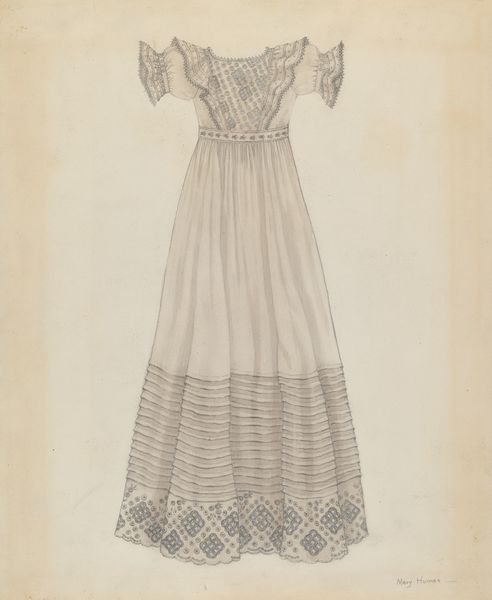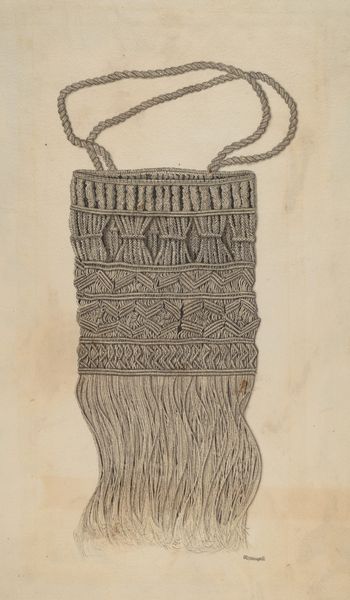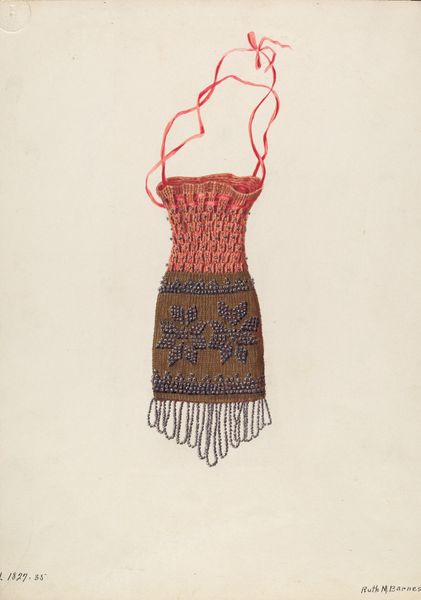
drawing, paper, pencil
#
drawing
#
paper
#
pencil drawing
#
pencil
Dimensions: overall: 46 x 35.6 cm (18 1/8 x 14 in.)
Copyright: National Gallery of Art: CC0 1.0
Editor: So, here we have Carl Buergerniss's "Handbag," a pencil drawing on paper created sometime between 1935 and 1942. The texture is incredible – you can almost feel the weave of the bag. What stands out to you about this piece? Curator: Well, focusing on the materiality, I see more than just a drawing. It's an exploration of labor and the value we assign to handcrafted items versus mass-produced goods. The painstaking detail Buergerniss dedicated to rendering this handbag elevates a functional object to art. Consider the context: did the materials used for the handbag have a specific provenance? Was this technique a common practice or unique? Editor: That’s interesting. I hadn’t thought about the labor involved. Do you think the choice of pencil, a readily available and relatively inexpensive material, plays into that idea? Curator: Absolutely! It highlights the contrast between the inherent value of the materials used, pencil and paper, versus the skill and time required to depict something as intricate as this knitted bag. Were similar handbags available commercially at the time? This work could critique consumption habits. Editor: So, by meticulously recreating something relatively mundane with a humble material like pencil, the artist is making a statement about labor, value, and maybe even consumer culture? Curator: Precisely. The drawing prompts us to think about the human effort involved in producing even everyday items and how that effort often becomes invisible in our modern, industrialized world. It encourages us to consider how material culture is shaped by the means of production and consumption. Editor: That definitely gives me a new perspective on this simple drawing of a handbag. I’m seeing so much more now. Curator: Indeed, by examining the process, materials, and context, we unlock a richer understanding of the artwork's potential meaning and the artist's intention.
Comments
No comments
Be the first to comment and join the conversation on the ultimate creative platform.
